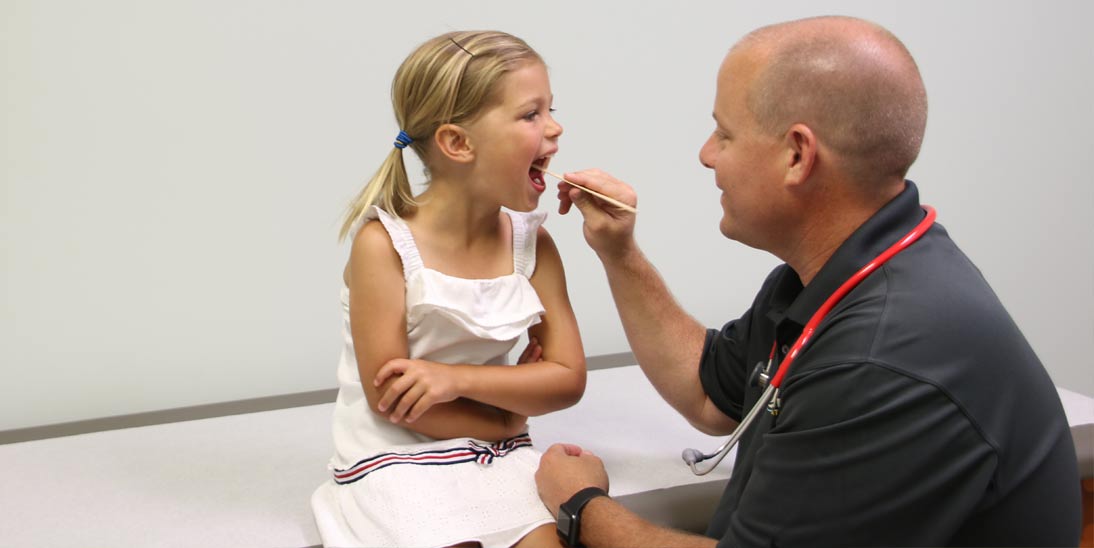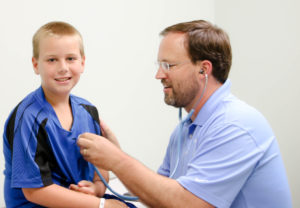
14 Jan Cold vs Flu: What’s the Difference?
Have you been up all night with a child who is coughing and congested? Have you gotten called by daycare or school with a child with a fever of 102? It’s winter time and how do you know if you have a child with the flu or just the common cold?
The common cold and the flu have many overlapping symptoms, and often they are hard to distinguish from one another based on symptoms alone. The flu usually makes kids feel worse than if they have a cold but it’s not always that easy. Both the common cold and the flu are caused by viruses, but different ones. The flu is caused by the influenza virus and the common cold is caused by multiple different viruses including rhinoviruses, coronaviruses and enteroviruses.
The common cold is usually pretty harmless to our patients. It may cause some sleepless nights with the cough and congestion but usually clears up by itself over a short period of time. Sometimes it may lead to a secondary infection, such as an ear infection.
The flu is often harmless to patients but normally with more severe symptoms than the common cold.
The differences between colds and flu are usually in the severity of the symptoms:
| Cold Symptoms: | Flu Symptoms: |
| low or no fever | high fever |
| sometimes a headache | headache in most cases |
| stuffy, runny nose | clear nose, or stuffy in some cases |
| sneezing | sneezing in some cases |
| mild, hacking cough | cough, often turning severe |
| mild body aches | severe body aches |
| mild tiredness or fatigue | extreme tiredness that can last weeks |
| sore throat | sore throat in some cases |
*modified from https://www.stanfordchildrens.org/
How is the flu diagnosed in a child?
Often your doctor can sit with you and your child and discuss your child’s symptoms and history. After a physical exam, many doctors are able to diagnose the flu based on this review of the child’s symptoms and their knowledge of the types of viruses that are going around at that time. Using a nasal swab and simple in office test, your provider can also test for the flu if needed – this is not always needed and can be discussed with your doctor.
How are a cold and flu treated in a child?
Antibiotics are not effective against viral illnesses, so they are not needed for the cold or flu. If your child has a secondary infection such as an ear infection or pneumonia, there may be a place for antibiotics when discussed with your pediatrician.
In both the cold and the flu, the treatment focuses on helping ease your child’s symptoms until the illness passes. Your child needs to get lots of rest in bed and drink plenty of fluids.
Treatment may also include medicines such as:
- Pain medication, such as ibuprofen or acetaminophen, may help lessen body aches and fever. We never recommend aspirin for a child with fever.
- There is an antiviral medication called Tamiflu that your doctor may recommend to help ease symptoms of influenza. This does not work for the common cold and must be used within 2 days of the start of symptoms for best effects.
Other Medical Issues can Influence Flu Treatments
If your child has other respiratory illnesses like asthma or other medical problems like diabetes, it is important to talk to your doctor early on in the illness, especially if you suspect flu.
Throughout the year, we are here to provide personalized pediatric care for your family. We take our time to review your child’s symptoms and develop a treatment plan to get them feeling better as quickly as possible. If you suspect your child has the common cold or the flu, contact us to schedule an appointment – we can often see your child the same day.
Dockside Pediatrics is Wilmington’s first and only pediatric practice that provides excellent, compassionate service through the direct primary care model. Unencumbered by the red tape of health insurance, Dr. Marc Yandle and Dr. Nathan Cook are able to offer personalized care that includes direct access, extended office visits, newborn home visits and so much more!




